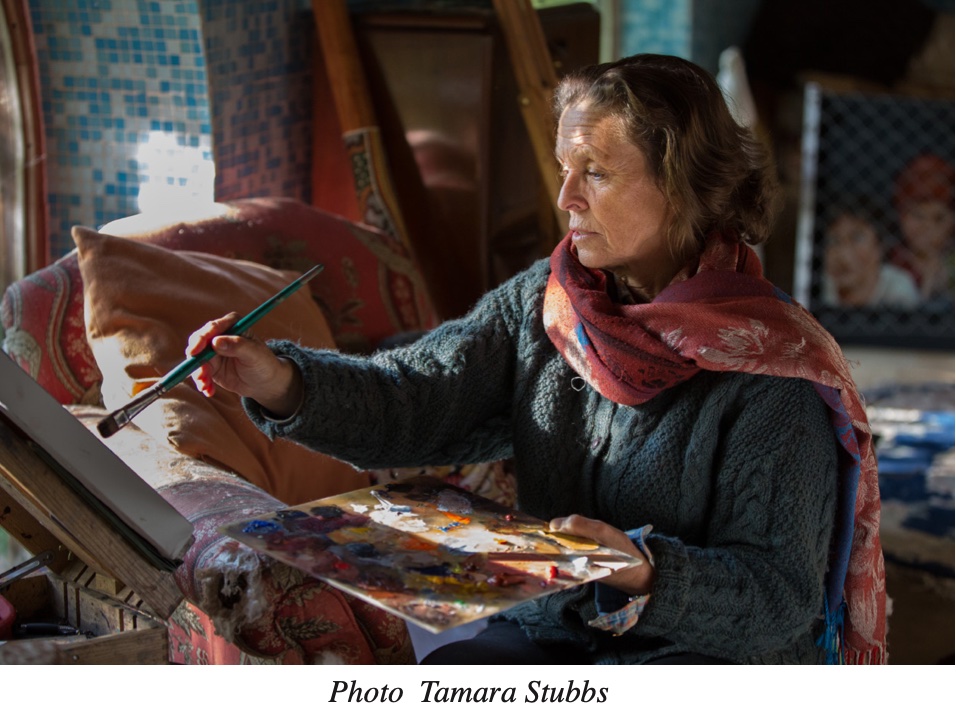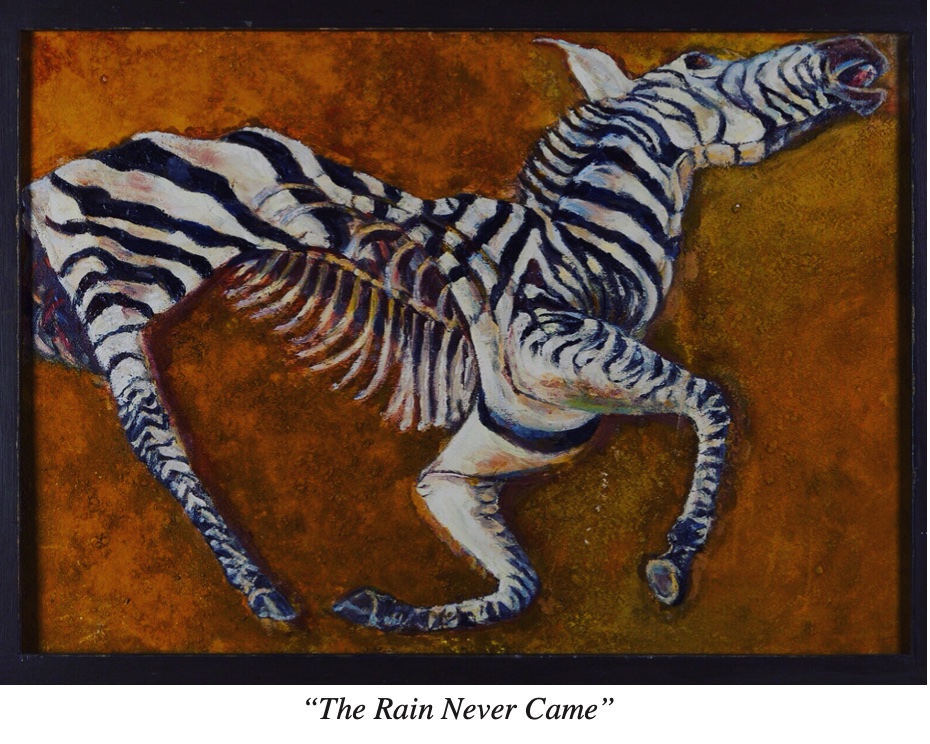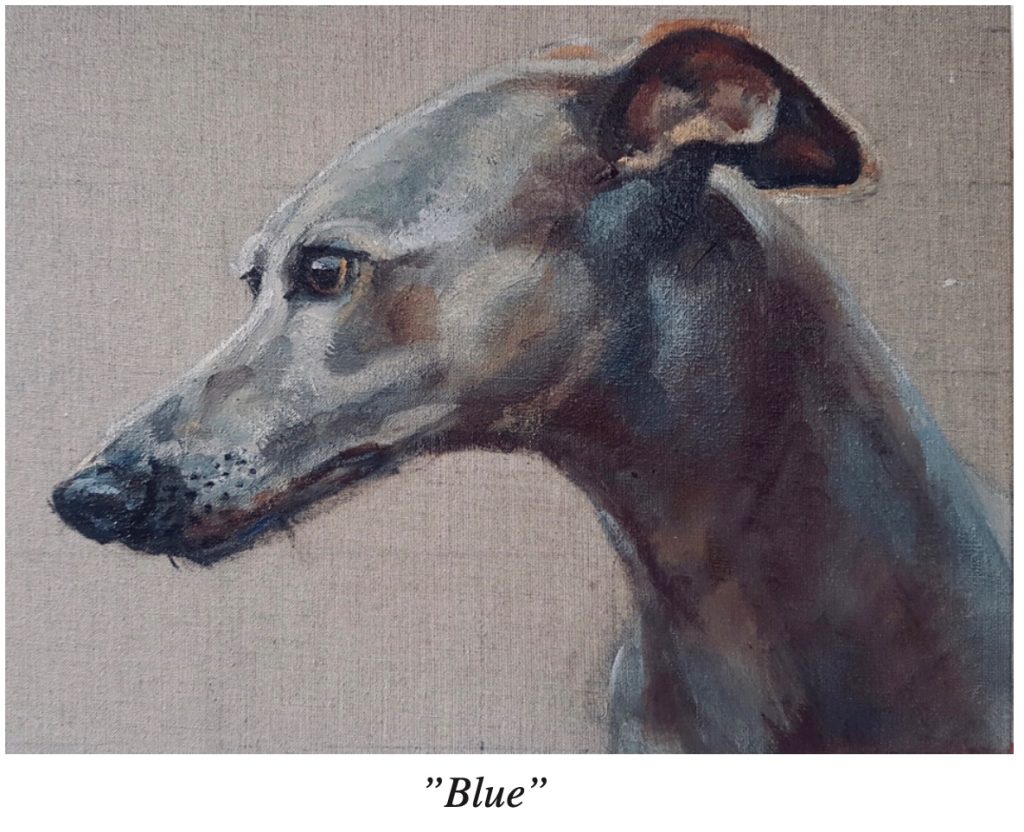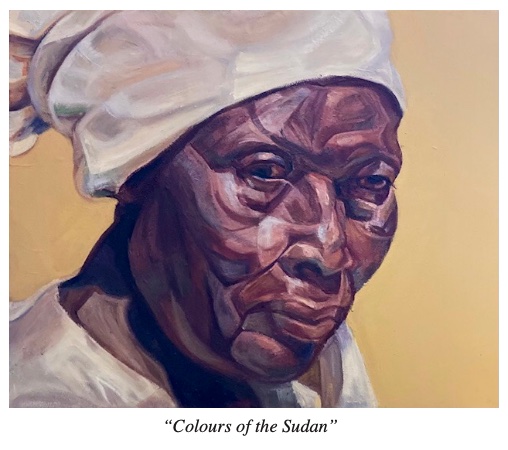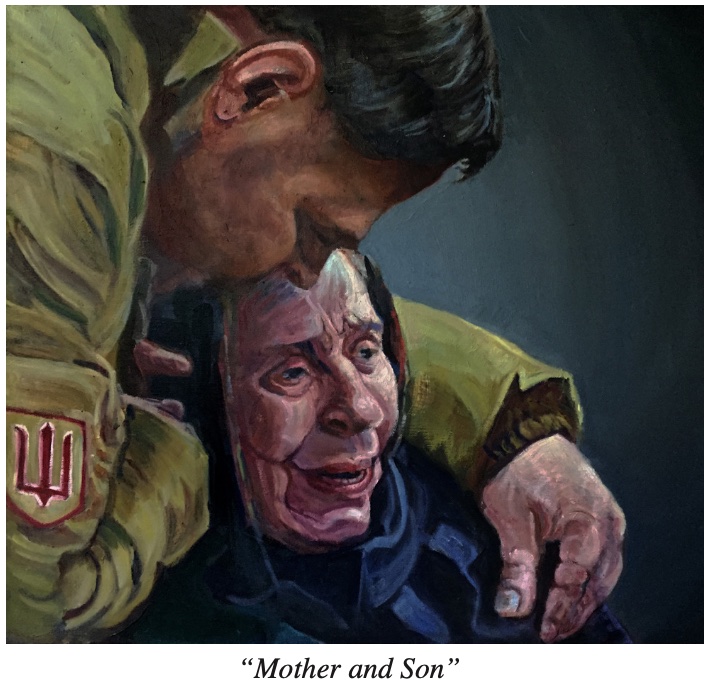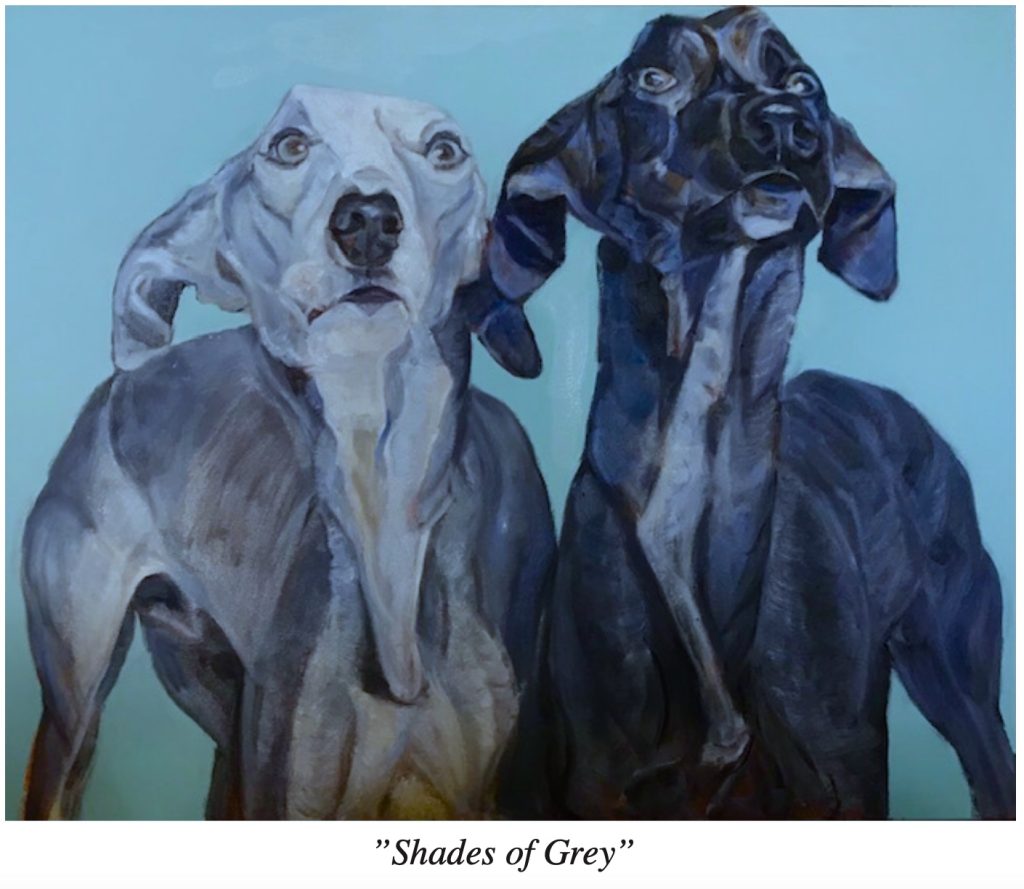Camilla is a passionate and prolific painter. I met Camilla, her husband and son in their home surrounded by farms in the rural village of Batcombe. On striking up a conversation with her son I heard about his career in a sustainable energy company and his passionate commitment to face climate change and the degradation of the environment.
Camilla and I then moved to her studio, a long, narrow, outside building full of canvasses, paints, easels, completed and unfinished works, in fact all the marks of an artist constantly and enthusiastically at work. She then sat down at her easel and proceeded to work on an unfinished portrait while questioning me without stopping about my views and pouring out hers.She talked not only about art, but about politics, the Tory leadership contest, the state of the country, what is hap- pening to bees, insects and wildlife. and the suffering that is so apparent both here and around the world as regards animals and humans as challenges are ignored. Above all, like her son, she talked about what we are and are not doing to face up to the radical changes needed if we are to survive climate change. All these things she said have deeply affected her approach to her art as she has said online, “Overall, I feel I am beginning a transition towards a more edgy and harsh subject matter – away from the pretty towards an activism more relevant to this troubled world.” So how has Camilla’s work developed to this point?
In her later teens Camilla had the privilege of having three years studying Renaissance Art History under Professor Simi in Florence where she was able to examine the great original works in their home and she continues to feel greatly in debt to that rich tradition. She then lived abroad for many years, in Canada and the USA until she moved to London where she became a photographer’s agent in advertising, bringing corporate clients together with top advertising photographers. From them she feels she learnt a great deal about the use of light and shade and composition. Once her two children had flown the nest, Camilla started to paint. Always oil on canvas, beginning with still life and then moving on to pets and portraits building up a steady and growing clientele as she became a largely self-taught professional artist which led to her being chosen to take part in the BBC1 Big Painting Challenge in 2017. Recently she has produced paintings of refugees and the homeless and has worked with Nightstop, a Bristol charity helping young people “thrown onto the streets”. She travels when she can and made many trips to Myanmar where her son was living and working for seven years. There she photographed the characters she saw and met. Many of whom she has painted. Camilla works both from life and from photographs, both her own and strong images she comes across, but feels that her use of colour, line, texture and composition are sufficiently her own to move her work far from being a copy of the original photo.
With a need to express both her emotional and political views of the world today, her latest painting of the corpse of a zebra illustrates where she aims to go. It is a shocking image of a zebra that had died of starvation due to the terrible droughts as a result of the Climate Emergency.
Camilla used a collection of natural earth pigments (some from the Sahara) as the background. This is the basis for a powerfully reconfigured and coloured work which she submitted for the exhibition at the Royal Academy. There it was considered to be “too horrible and upsetting” to be accepted, but when she put it up with her other works on line she received the following response.
“I’m struggling to put into words how much I am affected by this. It’s technically and visually amazing, hauntingly beautiful and yet gut-punchingly devastating. Just … Wow.
John Baxter
